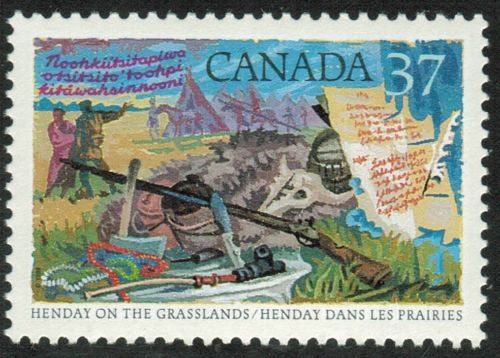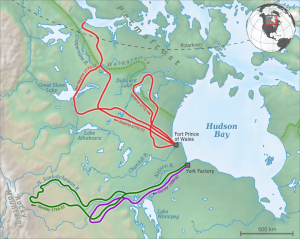On today’s date in 1754, English explorer Anthony Henday became one of the first Europeans to explore the interior of the Canadian northwest.
A convicted smuggler, Henday joined the Hudson’s Bay Company (HBC) as a labourer in 1750, when he began working at Fort York (York Factory) in present-day Manitoba. Soon after this time in the mid-18th century, Henday would venture farther into the western interior than any other European and make “valuable discoveries about the Indian economy and the nature of the company’s French competition,” according to the Dictionary of Canadian Biography.
“In 1754, Henday answered a request from the governor of Fort York for volunteers to travel to the western interior of the Company’s fur trading domain,” explained researchers with the University of Calgary’s Applied History Research Group. “The purpose of the expedition was to convince distant native trappers to bring their goods to Company posts on Hudson Bay, thus deflecting business from French traders working in the hinterland.”
That year, he travelled up the Hayes River and across the prairies between the North Saskatchewan and South Saskatchewan rivers to reach Red Deer, Alta.
“The party paddled up the Saskatchewan and then proceeded on foot, apparently along the Battle River valley, meeting many Assiniboine en route,” added the researchers.
The party arrived back at Fort York in June 1755.
Before the end of the decade, Henday travelled west once again, this time alongside Blackfoot Nation of the Northern Plains.
“I went with the young men a Buffalo hunting, all armed with Bows & Arrows: Killed seven, fine sport ….,” Henday wrote in a journal while wintering with the Blackfoot. “So expert are the Natives, that they will take the arrows out of them when they are foaming and raging with pain, & tearing the ground up with their feet & horns until they fall down.”
He eventually left the HBC in 1762.
“Henday travelled farther into western Canada than any white person had before him, and his journal contains important glimpses of how the indigenous population lived at that time,” added Jane Graham for the Canadian Encyclopedia.
Anthony Henday Drive, a 78-kilometre freeway encircling Edmonton, is named in his honour. Henday Hall, a residential tower in the University of Alberta’s main student residence complex, also carries his name.
1998 HENDAY STAMP
In 1988, Canada Post featured Henday on a 37-cent stamp (Scott #1199) as part of its four-stamp “Exploration of Canada: Recognizers” series.
Designed by Frederick Hagan, the stamp depicts Henday on the grasslands of the Canadian northwest.
Ontario artist Frederick Hagan painted each of the four “Recognizers” stamps, which comprised the third set of the “Exploration of Canada” series. With vivid colours, the stamps depict the lands carted by Henday and three other 18th-century explorers.


